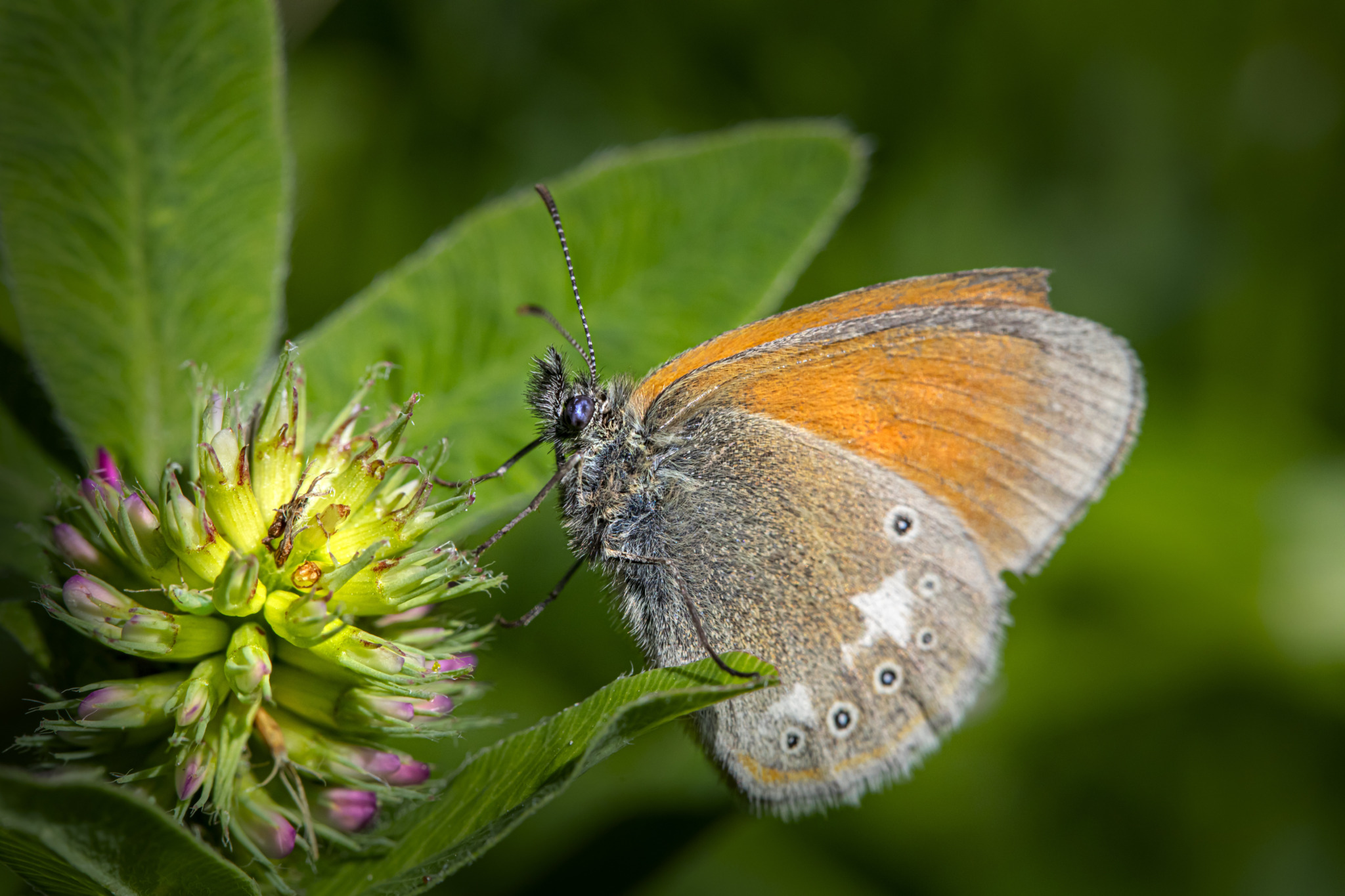Deep Overview: Chestnut Heath (Coenonympha glycerion)
The Chestnut Heath (Coenonympha glycerion) is a small, inconspicuous butterfly belonging to the Nymphalidae family (subfamily Satyrinae, the “Browns”). It is known for its soft brown and orange hues, with characteristic eye spots (ocelli) on the underside of its wings. This butterfly thrives in meadows, grasslands, and open woodland edges across Europe and parts of Asia. Despite its unassuming appearance, the Chestnut Heath is an important pollinator and an indicator species for grassland health.
Taxonomy & Classification
- Kingdom: Animalia
- Phylum: Arthropoda
- Class: Insecta
- Order: Lepidoptera (Butterflies & Moths)
- Family: Nymphalidae (Brush-Footed Butterflies)
- Subfamily: Satyrinae (Browns)
- Genus: Coenonympha
- Species: Coenonympha glycerion
- Common Name: Chestnut Heath
Physical Description
- Wingspan: 30–38 mm
- Coloration & Markings:
- Upperside:
- Warm chestnut brown to orange-brown
- Faint, darker borders
- Underside:
- Hindwings are gray-brown with distinct eye spots (ocelli), often with white centers
- Forewings are light brown with an orange tint
- Upperside:
- Key Features:
- Small, rounded wings
- Row of small black-ringed white eye spots on the hindwing underside
- Subtle sexual dimorphism, with females often being slightly lighter
Distribution & Habitat
- Geographic Range:
- Found in central and eastern Europe, extending into Russia, the Caucasus, and temperate Asia
- Present in parts of France, Germany, Poland, Ukraine, and the Balkans
- Preferred Habitat:
- Dry grasslands, open meadows, forest clearings, and steppe regions
- Prefers semi-natural pastures with tall grasses
- Found in lowland and montane regions, up to 1,500 meters elevation
Behavior & Adaptations
- Flight Period:
- June to August (one generation per year)
- In some southern regions, a partial second generation occurs
- Flight Pattern:
- Weak, fluttering flight, close to the ground
- Often rests with wings closed, relying on its camouflaged underside
- Camouflage:
- The muted brown and orange tones help it blend with dry grasses
- Territoriality:
- Males are moderately territorial, patrolling small areas for females
Diet & Feeding Habits
- Caterpillars:
- Feed on various grasses, including:
- Fescue (Festuca spp.)
- Bluegrass (Poa spp.)
- Meadow grasses
- Feed on various grasses, including:
- Adults:
- Feed on nectar from wildflowers, such as:
- Thistles
- Buttercups
- Knapweed
- Occasionally sip moisture and minerals from damp soil
- Feed on nectar from wildflowers, such as:
Reproduction & Life Cycle
- Breeding Season:
- Late spring to early summer
- Mating Behavior:
- Males actively search for females, engaging in short aerial chases
- Egg-Laying:
- Females deposit single eggs on grass blades
- Caterpillar Stage:
- Pale green caterpillars with faint stripes
- Feed at night to avoid predators
- Pupation:
- Pupates among grass stems, where it is well camouflaged
- Overwintering:
- Caterpillars hibernate during winter and resume growth in early spring
- Adult Lifespan:
- 2–3 weeks
Predators & Threats
- Natural Predators:
- Birds, spiders, and predatory insects
- Human-Related Threats:
- Habitat destruction due to agriculture and urbanization
- Overgrazing leading to a loss of host plants
- Climate change affecting grassland ecosystems
- Conservation Status:
- Declining in some areas, but still relatively widespread
- Conservation efforts focus on maintaining natural grasslands
Ecological Importance
- Pollination:
- Helps pollinate wildflowers, supporting plant reproduction
- Food Source:
- Provides food for birds, reptiles, and predatory insects
- Indicator Species:
- Its presence reflects healthy grassland ecosystems
Relationship with Humans
- Difficult to Spot:
- Its small size and camouflaged coloring make it challenging to observe
- Popular Among Butterfly Enthusiasts:
- Often sought after by butterfly watchers in meadows and pastures
- Threatened by Land Use Changes:
- Intensive farming and urban expansion reduce its habitat
Similar Species & Identification
- Small Heath (Coenonympha pamphilus)
- Similar in size but lacks distinct eye spots on the underside
- Pearl-bordered Fritillary (Boloria euphrosyne)
- More orange in color, with a faster flight pattern
- Meadow Brown (Maniola jurtina)
- Larger and darker brown, with an eyespot on the forewing
Fun Facts
- Males patrol meadows, searching for females rather than waiting for them
- Caterpillars hibernate during winter, resuming growth in spring
- Has a slow, low flight, making it easy prey for birds
- The “eyes” on its wings help deter predators by mimicking a larger animal
Conclusion
The Chestnut Heath (Coenonympha glycerion) is a modest yet ecologically important butterfly, thriving in grasslands and meadows across Europe and Asia. Its small size, brown-orange coloration, and eye-spotted hindwings provide both camouflage and predator deterrence. While not endangered, it faces threats from habitat loss and agricultural expansion. Protecting natural meadows and semi-wild pastures is essential for its long-term survival.
Views: 677
Subscribe to the newsletter:
